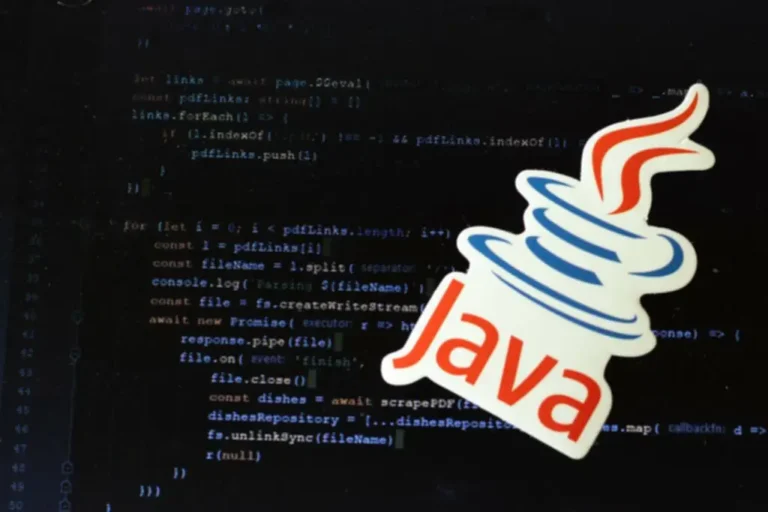Software development
What’s Container Orchestration? How To Handle Your Containers With Microk8s
Transform Your Business With AI Software Development Solutions https://www.globalcloudteam.com/ — be successful, be the first!
Container Orchestration Platforms
You will achieve all of the instruments to optimize the resource utilization and to reduce the operational override. Hello, welcome to this tech talk Data Mesh session about container orchestration. In previous sessions, we’ve seen that images and containers are a regular way to simply run and distribute purposes across computers and servers.
Key Parts Of Orchestrators
Kubernetes additionally has an ever-expanding stable of usability and networking instruments to boost its capabilities through the Kubernetes API. These embody Knative, which enables containers to run as serverless workloads, and Istio, an open supply service mesh. By automating operations, container orchestration helps an agile or DevOps approach. This permits groups to develop and deploy in rapid, iterative cycles and launch new features and capabilities faster. Containers are lightweight packages of application and the related dependencies that are https://www.globalcloudteam.com/container-orchestration-how-it-works-and-use-cases/ required to run the application.

Advantages Of Container Orchestration
That additional eases your engineers’ job while lowering human error and time used. This article mentioned the advantages of container orchestration, including including improved scalability, enhanced useful resource administration, and elevated deployment effectivity. It surveyed several tools, mentioned some challenges posed by container orchestration and how one can address them, and defined how CI/CD can simplify container orchestration by way of automation.
Its flexibility to adapt to completely different roles makes Nomad very appealing to medium-sized firms with less hardware and workers assets. It’s simpler to begin with, easier to maintain, but lacks group help. The hottest resolution in Kubernetes for load balancing is Ingress, a specialised Kubernetes controller (all too just like a pod). Ingress includes a set of rules to handle site visitors and a daemon to use them. This shift permits for higher scalability, safety, management, and improved integration with cloud providers.
- The management aircraft scheduler selects the most suitable node for every pod, balancing the workload effectively throughout the cluster.
- Docker is a well-liked engine that converts container images into containers during runtime.
- Kubernetes container orchestration refers to the usage of the Kubernetes open supply platform to manage the container life cycle.
- It permits resource allocation utilizing fashionable kernel features, such as Zones in Solaris and CGroups in Linux.
Kubernetes and different cloud native applied sciences assist make this choice straightforward. Kubernetes providers offered by all cloud suppliers are kind of the same and so is migrating among them. In-fact many organizations choose a hybrid cloud mannequin and kubernetes might help you undertake that. You can now have functions operating across various cloud providers ,as nicely as on premise infrastructure, and nonetheless handle them constantly using kubernetes. Finally, to handle these docker containers we’d like a container orchestration platform. This platform runs on prime of a fleet of digital machines taking excellent care of scheduling and resource requirements, among other things for these docker containers.
Container orchestrators, corresponding to Kubernetes, ensure that these containers work together efficiently across completely different servers and environments. Orchestrators provide a framework for managing container lifecycles, facilitating service discovery, and maintaining high availability. For microservices architectures, the place cloud-native applications encompass quite a few interdependent parts, this framework is foundational. Container orchestration software program is an integral part of modern-day software growth, allowing teams to manage, schedule, and keep their microservices and containerized workloads efficiently. By automating the deployment, scaling, and administration of containerized functions, container orchestration methods make it easier to advertise new code to production automatically after passing the checks. Orchestration platforms integrate properly with CI instruments to automate constructing, testing, and packaging containers as a part of the CI process, thus aligning with DevOps principles.

Swarm runs wherever Docker does, and inside those environments, it’s thought of safe by default and easier to troubleshoot than Kubernetes. Docker Swarm is specialized for Docker containers and is generally best fitted to improvement and smaller manufacturing environments. A container is a small, self-contained, totally practical software program bundle that may run an application or service, isolated from different applications operating on the identical host.
This command displays the name, sort, Cluster-IP, external-IP, port(s), and age of the presently working companies. This will contain deciding how many nodes you need, what kind of storage each node will use, and the way the nodes shall be interconnected. Container orchestration has been known as the following massive factor in the world of expertise. To connect to the Docker Kubernetes cluster, first you have to examine the present context.
Apache Mesos offers an easy-to-scale (up to 10,000 nodes), light-weight, high-availability, and cross-platform orchestration platform. It runs on Linux, Windows, and OSX, and its APIs support several popular languages such as Java, Python, and C++. As discussed earlier, containers are lightweight, share a host server’s resources, and, extra uniquely, are designed to work in any environment — from on-premise to cloud to local machines. Docker simplifies software deployment with lightweight, portable containers, making certain consistency, scalability and effectivity across environments. Streamline your processes and boost efficiency with Docker today.
It additionally integrates with Visual Studio, Visual Studio Code, and GitHub actions to offer automated end-to-end CI/CD pipelines. The future factors to a digital world where most, if not all, functions run on containers. For executives, understanding the synergy behind the container ecosystem provides a strategic benefit. Armed with an informed viewpoint can allow you to anticipate and effectively meet the evolving calls for of modern software program improvement — and with optimum ROI. Vital for digital enterprises experiencing fluctuating demand, orchestrators inside the container ecosystem enable businesses to scale their purposes with out compromising performance.
With container orchestration service, failing containers could be mechanically recreated, restoring full capacity and redundancy. Some parts of your IT infrastructure could not work well when using container orchestration. For instance, some databases aren’t built to support orchestration — they were constructed for mounted data heart infrastructure and don’t work well in cloud environments where cases can be relocated. Building a highly obtainable service on high of such databases just isn’t trivial. Container Orchestration complements information lakehouse environments by enabling scalable, versatile information processing and analytics.
Kubernetes takes more time and sources to deploy, and the installation process is extra complex. There are other lighter Kubernetes implementations that cover only a few of the full options. These are used for rapid growth and testing, but they do not translate properly into the manufacturing stage since they are susceptible to configuration inconsistencies. As a full-featured container orchestration tool, Docker Swarm is well fitted to situations where sooner preliminary deployment is needed and where large-scale growth or adaptability just isn’t anticipated.
Fargate mechanically scales your compute sources to satisfy your app’s necessities. OpenShift consists of source-to-image support that builds container images for you. It inspects your app’s source and produces a picture that’s ready to deploy. OpenShift additionally has native integrations with other software supply tools, corresponding to Jenkins CI/CD pipelines. Container orchestration needs to be supported by a robust toolchain that permits you to deploy, configure, and monitor your applications.
Each cluster usually consists of a bunch of nodes (also known as server instances). Worker nodes run containers using container runtimes (such as Docker). A group of control plane nodes act because the orchestrator of the cluster. Users can manage and monitor containerized workloads with instruments that includes utility programming interfaces (APIs) and graphical consumer interfaces (GUIs).
You can do this with greater precision and mechanically cut back errors and prices utilizing a container orchestration platform. DevOps engineers use container orchestration platforms and instruments to automate that process. With the number of container orchestration instruments available, it can be difficult to understand what features each offer, why they should be used, and whether or not they are a match in your organization’s wants. Mesos is the primary open source cluster management service to handle a workload in a distributed surroundings utilizing dynamic useful resource sharing and isolation, the segregation of a program from different running processes.

